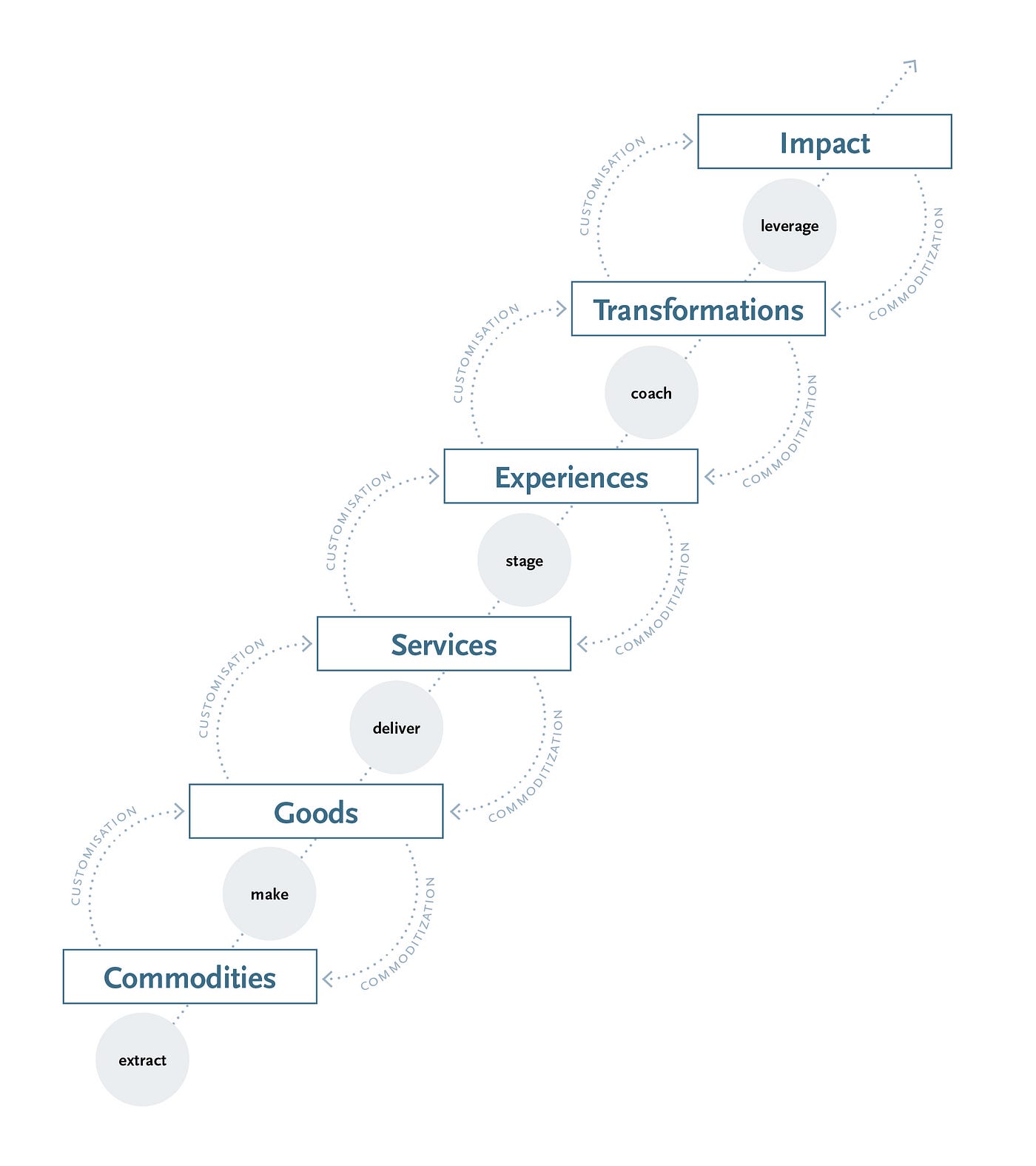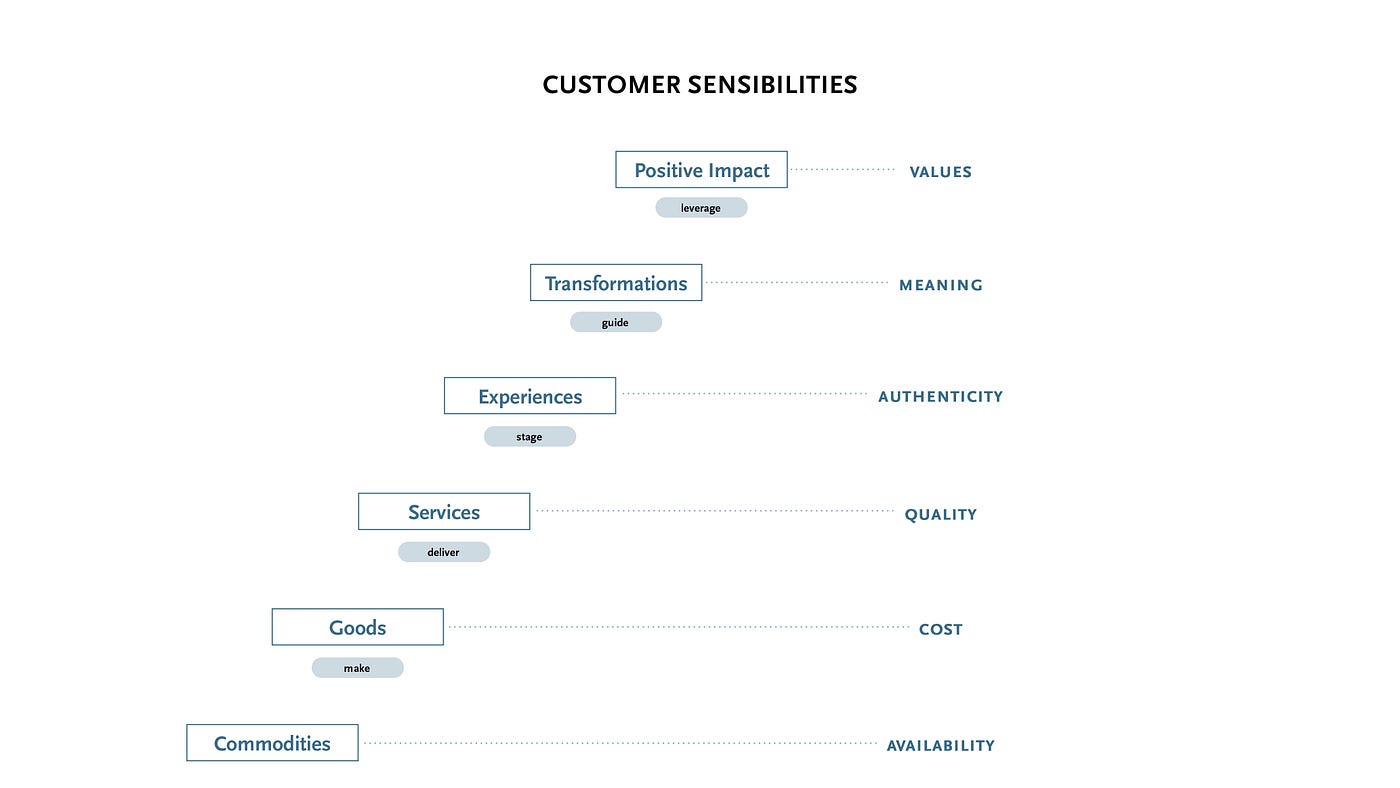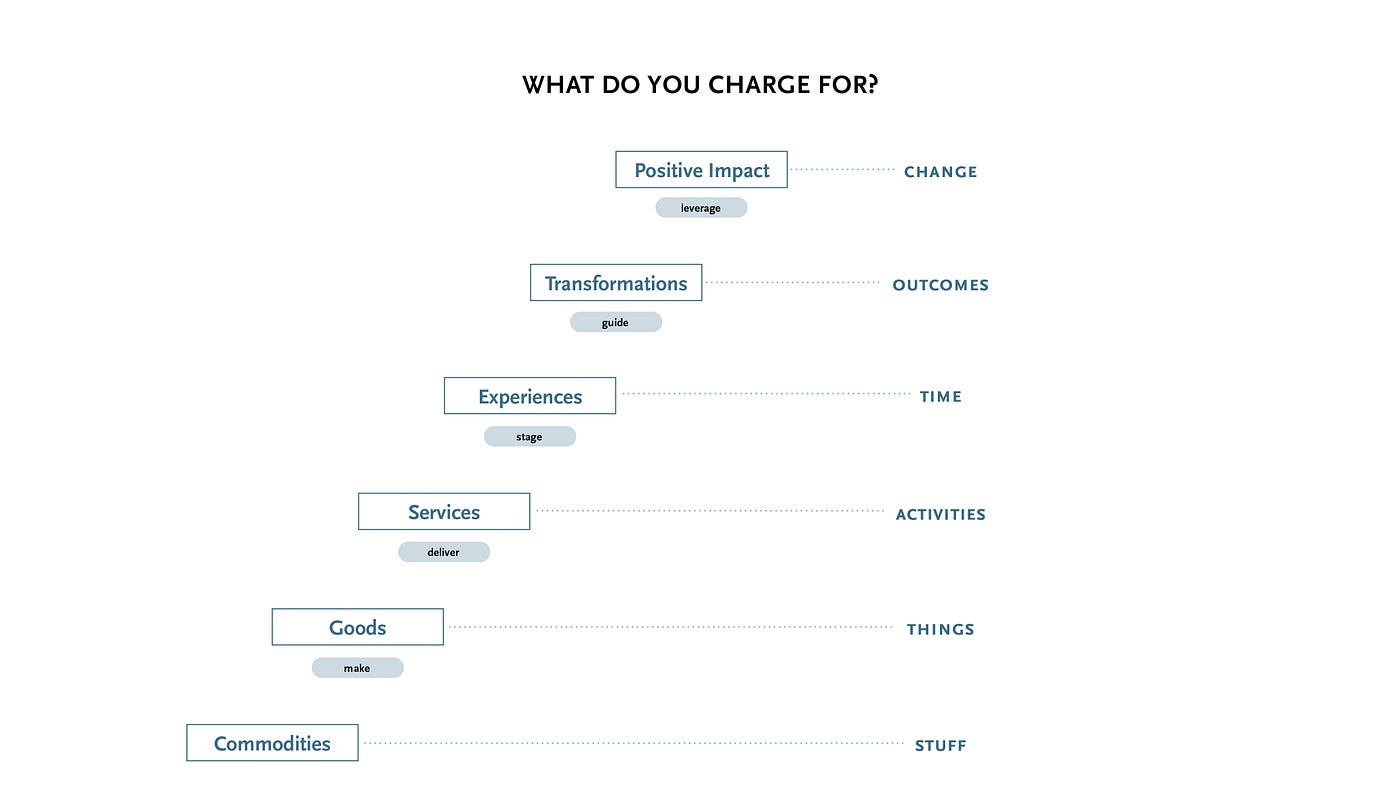

Time to extend the economic progression model
source link: https://uxdesign.cc/time-to-extend-the-economic-progression-model-5559245c2605
Go to the source link to view the article. You can view the picture content, updated content and better typesetting reading experience. If the link is broken, please click the button below to view the snapshot at that time.
Time to extend the economic progression model

Oceans are a crucial part of the system that produces oxygen. Yet, we treat them as a free food resource that can be exploited without as much as” how do you do”. Animals create a complex system that enables our planet to function in a fairly homeostatic state. Yet, we don’t even blink when another animal species disappear. There is almost no point to talk more about the Amazonian forest or any other forest for that matter. As humans, we seem to see all of what nature offers not as a gift to be revered but as something we have rightful ownership to use as we please. It would be hard to find a better picture of, what the old saying states, >> sawing a branch on which we sit << (as Her Deepness Sylvia Earle speaks about here).
Back in 1993, Joe Pine and Jim Gilmore had an insight into what the progression of our economies was likely to look like. They observed that as the economic world of humans evolved, we had moved from extracting commodities to selling goods, offering services and, fairly recently, entering the space of staging experiences as a way to create a competitive advantage in the market. These steps are fairly rooted in the consumerism economy blooming since the end of the 2nd WW. However, more and more people and organizations realise that consumerism is a slippery slope for humanity in a, not so long anymore, timeframe. The era of experientalism (as James Wallman, the author of “Stuffocation” and “Time, and how to spend it” calls it), we are hopefully at the brink of, is the first sign of a turn of the tide. Well-designed experiences are not only more appreciated and longer remembered but also, hopefully, less taxing on the environment. They are aiming to be fun but as Pine and Gilmore model predict, more and more of them will be aiming to be meaningful and even transformational.
Mat Duerden, the co-author of “Designing Experiences” talks about small “t” and capital “T” transformations. Small transformations are the little changes we face that alter the way we see the world in some way. We may not see them happening to us at a given moment but over time they influence our perspectives, opinions, and attitudes. There are also capital “T” transformational events — situations that dramatically alter the ways in which we see the world and ourselves. They can happen to us or can impact us indirectly but their sheer power of influence is noticeable and significant. They make us into a new, hopefully, better version of ourselves. We transform to live more meaningful, more fulfilled lives. We transform to be better partners, parents, leaders, and citizens. We transform to be the people we dream to be. Products, services, and experiences can help and guide us on that path. But to what end?
I always sensed that transformation cannot be the end to the economic progression model, that there is more on our human event horizon (as articulated with the book “Design to Change” by Roel Frissen, Ruud Janssen and Dennis Luijer). As I kept on working in the field of experience and transformational design, I kept on facing a question: what for? What is the underlying purpose of the experiences we stage? Should there be one? What is the transformation we hope to guide? Should it be guided towards a specific destination? I am certain that many experiences are, and should be, designed for pleasure and fun. I am also convinced that a multitude of transformative designs is right to aim to aid people in leading a more fulfilled life. Many of these designs are focused on an individual living through and changing things about and around themselves. But I believe there is more. I believe that there is a sixth stage of the economic progression model, and it is contributing to leveraging impact that stems from our transformational process.
The sixth stage of economic progression
Leveraging impact means that as transformed people we decide to consistently choose products, services, experiences and transformations that align with our direction of change, be it our values, ideas or the image of the world as we would like to have it. So, while Pine and Gilmore talk about the time saved, time well spent and time well invested for services, experiences and transformations respectfully, I would add time well leveraged as a representation of leveraging impact. In the Aristotelian framework, it can be seen as turning from a hedonistic approach to life represented by commodities, goods, services, experiences and to an extent transformations into eudaemonic approach to life where we see our actions as actions not only for our own comfort, joy or development but also as means to positively impact the world we live in. And, as a consequence, we decide to choose offerings that help us have such eudaimonic impact. So, in the terms of customer sensibilities, it means that our consumer choices are based on our values rather than just personal meaning.

Much like experiences and transformations, positive impact can be seen as a complex economic offering. While commodities, goods, and services are building blocks that can stand on their own — they don’t need an extra “flavor” (to use my umami metaphor) to exist in the world. When we come to experiences and transformations, they are higher-order elements — an experience and transformation can’t really exist without goods and services. There can be a set of goods and services through that “replicate” what transformation or experience offers but without the crucial ingredient, which is a conscious focus on experience or transformation, they are just a bunch of goods and services stuck together. Like a fitness club Lance A. Bettencourt, B. Joseph Pine II, James H. Gilmore, and David W. Norton mention in the recent HBR article “ The “New You” Business“ — you can have all the elements of a transformational fitness club put together: the space, the subscription, the trainers, the dietician, etc. but without conscious design, it is not going to be a transformational experience offering (although, surely, many people can undergo a transformation there based on their introspective need to change a lifestyle or lose weight).
Now, the impact I am talking about is a set of goods, services, experiences, and transformations that have a higher purpose, and that higher purpose becomes a reason to buy. It is an economic shift. It is something that people are willing to pay for and ‘vote for with their money’, which is in terms of economic progression is a willingness to pay more for seeing the actual impact on the world as they like it to be. It may seem intangible but so are transformations. The main difference is the shift from individual to collective benefits, as aptly put in the most recent “Meaningful Brands Report” (2021) by Havas.

Regenerative socialization
Such process could be called a regenerative socialization of companies and brands — as consumers we would only choose the offerings that contribute to the change we want to see in the word (and I mean not some CSR activities run on the side of the main business but a true impactful way of corporate being very much like Patagonia does). It may be a surprising phrase, so let me explain what I mean by it. According to Ian Robertson (“Sociology”, 1977), there are four types of socialization known in human societies: primary socialization, anticipatory socialization, re-socialization and developmental socialization.
Primary socialization is a process of teaching children the rules and norms of the society they find themselves living in. It includes teaching language and cogitative skills, the internalization of cultural norms and values, establishment of emotional ties, and the appreciation of other roles and perspectives. Sometimes, however, we may find ourselves planning to join groups, whose norms we may not know. For example, we may plan to move to another country, join a new organization or social circle. In anticipation of that, we may learn the norms and rules of that new group so we are better able to fit in. Contrary, we may also find ourselves having to unlearn certain norms and rules in order, for example, to rejoin your former social group. If you ever moved back to your country after living abroad for some time, you surely have experienced this. Finally, there is one more type of socialization called “developmental socialization”. As Robertson states, “It builds on already acquired skills and knowledge as the adult progresses through new situations such as marriage or new job. These require new expectations, obligations, and roles. New learning is added to and blended with old in relatively smooth and continuous process of development”.
These types of socialization all refer to human ability to change and progress. But what if it’s not enough? What if human development is not the ultimate answer? What if the economic progression should not end on our species but transcend it? What if we need a new type of socialization, the regenerative socialization — a way in which humans relearn how to be a meaningful part of an Earth eco-system rather than its most destructive force? Would it become the seventh stage of economic progression going beyond leveraging impact?
(the extended version of this article was originally published on worldxo.org site)
Recommend
About Joyk
Aggregate valuable and interesting links.
Joyk means Joy of geeK